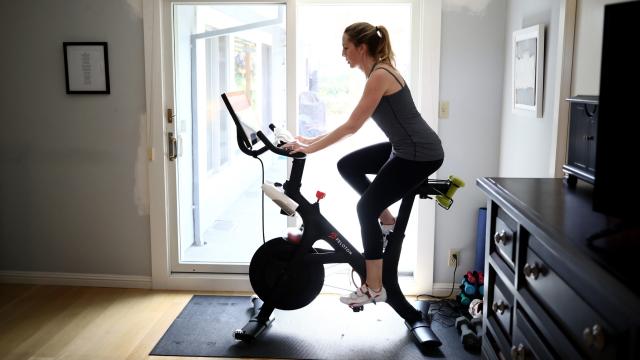Peloton may have experienced massive success during the pandemic, but its struggle to ship its Bikes and Treads on time is threatening to derail that. Customers have taken to social media to vent their frustrations about weeks and months-long delays, prompting Peloton to announce it’s ready to invest $US100 ($132) million to address the issue.
In a blog, Peloton CEO John Foley apologised for widespread delays that often result in long wait times and rescheduled delivery dates. Foley notes that while the company has managed to scale up its manufacturing capabilities six-fold in the last year, he cited port congestion in Los Angeles and Long Beach as a major reason why their deliveries have been so slow. “The global increase in shipping traffic has added significant delays to all sorts of goods coming to U.S. ports, including Peloton products,” Foley writes. “These unpredictable delays have resulted in painful delivery reschedules for many people as Peloton Bikes, Treads, and accessories have been held at port for upwards of five times longer than usual.”
[referenced id=”1664684″ url=”https://gizmodo.com.au/2021/01/peloton-finally-launched-its-long-awaited-workout-playlist-feature/” thumb=”https://gizmodo.com.au/wp-content/uploads/2021/01/15/qjqjpppjyn6gopdydoge-300×169.jpg” title=”Peloton Finally Launched Its Long-Awaited Workout Playlist Feature” excerpt=”If you subscribe to the Peloton app or own one of the company’s bikes or treadmills, you know part of the fitness service’s appeal is the variety of class lengths it offers. You can take a 30-minute ride, run, or cardio class, then follow it up with a 20-minute upper…”]
The solution? Investing $US100 ($132) million to expedite the shipping process, and in many instances, shipping customers treadmills and bikes by air instead of the sea. Foley says that doing so will cost Peloton “over ten times [its] usual cost per Bike and Tread.”
Foley also referenced the company’s plans to expand its U.S.-based manufacturing operations. At the end of last year, Peloton announced it had plunked down $US420 ($553) million to buy Precor, a major player among global commercial fitness equipment makers. The deal secured 58,064 sq km of additional U.S. manufacturing capability, in a move that potentially allows Peloton to produce more of its equipment at home than in overseas facilities. So if you really think about it, Peloton’s spent a lot more than $US100 ($132) million trying to fix this shipping delay problem.
The Peloton shipping delays were a problem ever since the early days of the pandemic, but it appears it’s only gotten worse over time as more people decide to invest in at-home fitness. In a New York Times investigation, one customer had ordered a Peloton bike on Nov. 7, well before Christmas, and was told to expect a delivery on Jan. 5, only to be surprised at the last minute with a rescheduled date of Jan. 30. Another had ordered her bike on Oct. 17th and had her delivery delayed three times to Feb. 22nd. Thousands of frustrated customers have taken to Facebook groups, Reddit, Instagram, and Twitter to voice their complaints about not only the delays but Peloton’s customer service as well. Another issue is that, according to the Wall Street Journal, customers who decide to finance their Pelotons are making payments on their bikes and treadmills long before they even arrive.
At the crux of the problem is the fact that even though Peloton makes a solid fitness product and streaming platform, it’s not exactly cheap. While Gizmodo positively reviewed the new Bike+ — which has had particularly long wait times — it’s understandable that some folks would feel absolutely cheated out of $US2,500 ($3,290) if they had to still pay for the device while waiting several weeks or months for the bike to arrive. Even though Peloton introduced cheaper options in September, you’re still paying at least $US1,895 ($2,494) at the very minimum for the original bike or $US2,495 ($3,283) for the cheaper treadmill. That’s not to mention the monthly $US39 ($51) subscription for the app.
In any case, it’s on Peloton to fix its shipping delays, and fast. There’s an end to the pandemic on the horizon, and competitors like SoulCycle are taking full advantage of Peloton’s growing pains. Investing $US100 ($132) million to solve the problem is a good step, but by the time Peloton finishes ramping up its manufacturing capabilities, who’s to say fed-up customers won’t just go back to the gym?
